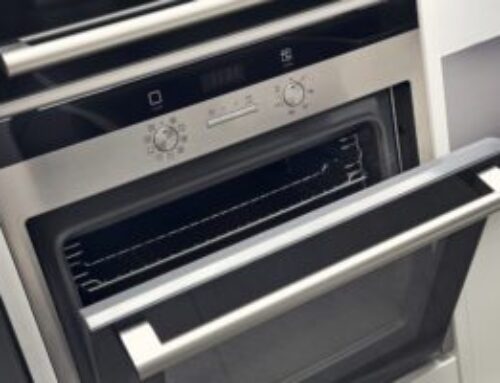The average homeowner deep cleans their home around five times per month. For most, deep cleaning means disinfecting every surface in their house. And if you’re the average homeowner, then you likely keep your kitchen sink clean and sparkling.
As clean and sparkling as you can, at least.
Because despite your efforts, you might start smelling an odor wafting from the depths of your kitchen drain. You might realize that wiping down your basin with an all-purpose cleaner once a week wasn’t the “deep clean” you thought it was.
Don’t sweat! All you need are some top kitchen sink cleaning tips to keep your drain, basin, and faucets fresh and germ-free. This comprehensive kitchen sink cleaning guide will explain what you need to know.
How to Clean Your Kitchen Sink Basin
There are several ways you can keep your kitchen sink clean. Whichever method you choose, remember to move any dishes out of your basin first. You should also move any soap dishes, sponge holders, and any other accessories before you start cleaning too.
Option 1: Gentle Soap and a Soft Clean Cloth
To achieve a clean kitchen sink, wipe it down with soap, warm water, and a soft cloth every day. Do this before and after preparing meals. You can use simple dish soap or vinegar, though vinegar isn’t as effective at killing bacteria.
This is an ideal method for sinks made from all types of materials, including stainless steel and porcelain.
Option 2: Lemon Juice Mixtures or Hydrogen Peroxide
Want deep house cleaning tips for your kitchen sink basin? Lemon juice and salt are perfect for cleaning stains on porcelain sinks. Mix 1/4 cup of lemon juice with a teaspoon of salt, pour it on the stains, wait, and wipe away.
If you have a stainless steel basin, mix 1/4 cup of lemon juice with a teaspoon of baking soda. Wipe it around your basin, wait ten minutes, and wash it away with water.
You could also use a hydrogen peroxide solution spray. Cover your entire sink with the mixture for around 15 minutes before wiping away with warm water. You may need to scrub at any stains or problem areas, but it should clean your sink like bleach.
How to Clean Your Kitchen Sink Drain
Drains are one of the toughest parts of your kitchen to keep clean. Not only can you not see what you’re cleaning, but you also can’t be sure of the extent of the filth.
The best keep kitchen sink clean tips anyone could give you when it comes to cleaning drains is to be consistent and ruthless!
Option 1: Pour Hot Water
Every time you wash dishes, run your hot water tap for a couple of minutes afterward. This will soften any debris and allow it to move through your pipes before it dries out and lives in your drain. Pouring hot water will help keep odors at bay and reduce the need to call a plumber.
If your water does not run hot enough, heat up the water another way. Put a big jug of water in your microwave or use a kettle. You don’t need to do this every time you wash dishes but aim for at least three times a week.
Option 2: Baking Soda and Lemon Juice
Despite your best efforts, sometimes drains need extra help to move gunk and food build-up through your pipes. If your sink isn’t draining water as fast as it should or the water is backing up, your drain needs a deep clean.
You can always use off-the-shelf drain cleaners from your grocery store. Read the instructions beforehand, as they often contain strong, corrosive chemicals. You don’t want to cause permanent damage to your pipes.
But these drain cleaners can be expensive. You can make your own using 1/4 cup of lemon juice, 1/4 cup of baking soda, and 1/2 cup of white vinegar. Pour the baking soda on your drain, followed by a mixture of lemon juice and vinegar.
Wait five to ten minutes, then pour boiling hot water into your drain. Always rinse drain cleaners with hot water to stop the cleaner from forming more gunk to clog your drain with!
How to Clean Your Kitchen Faucets
Many homeowners forget to clean their faucets, but they still get dirty. Here are some options to clean your taps, whether they need a light clean or a deep clean.
Option 1: Mirror Cleaner and a Dry Cloth
You can clean the exterior of your faucet using the same method as you would clean your basin. Use dish soap and warm water on a soft cloth and scrub the outside. This will remove bacteria and germs.
But if your faucet is chrome-plated, then you want it to shine! Use a window and mirror cleaner spray and scrub it with a dry cloth until there are no more streaks.
Option 2: Scrub Your Faucet Aerator
Did you know that you can remove the end of your faucet, and you will find a tiny filter? It’s true!
This is a faucet aerator that acts as a water filter and saver. If you don’t unscrew and clean this device, then it can get dirty and rusty.
Unscrew the aerator (you may need a key) and scrub it with a small brush. Clean toothbrushes work well. Rinse the aerator with hot water, then screw it back on. You only need to do this around once a year.
Keep Your Kitchen Sink Clean by Hiring House Cleaning Services
This kitchen sink cleaning guide offers different ways you can keep your kitchen sink clean to avoid clogs and odors. Stay on top of your cleaning routine, and you won’t have to worry about either.
But aren’t you tired of deep cleaning the dirtiest parts of your home? One of the benefits of hiring a professional house cleaner is that they do these jobs, so you don’t have to!
Hubbard’s Maid Service offers top to bottom cleaning and many more housekeeping services. Check out our full list of cleaning and maid services to find one that suits your needs!




